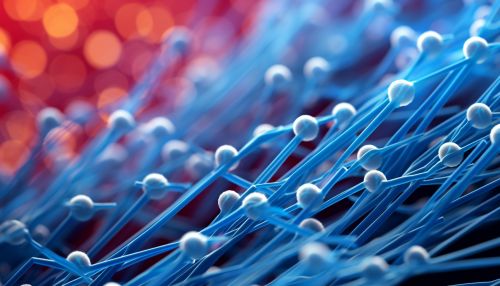Adenylate cyclase
Introduction
Adenylate cyclase (also known as adenylyl cyclase or AC) is an important enzyme in the body that helps to regulate various physiological processes. This enzyme is involved in the conversion of adenosine triphosphate (ATP) to cyclic adenosine monophosphate (cAMP) and pyrophosphate. The production of cAMP is a crucial step in many cellular processes, as it serves as a secondary messenger in many biological processes.


Structure
Adenylate cyclase is a transmembrane protein, meaning it spans the cell membrane. It consists of two main parts: the transmembrane region and the catalytic region. The transmembrane region is responsible for anchoring the enzyme in the cell membrane, while the catalytic region is responsible for the enzymatic activity of converting ATP to cAMP.
Function
The primary function of adenylate cyclase is to produce cAMP from ATP. This process is triggered by the binding of a hormone or neurotransmitter to a specific G protein-coupled receptor (GPCR) on the cell surface. Once activated, the GPCR stimulates the G protein, which in turn activates adenylate cyclase. The activated adenylate cyclase then converts ATP into cAMP.
Role in Signal Transduction
Adenylate cyclase plays a key role in signal transduction, the process by which a cell responds to external stimuli. The cAMP produced by adenylate cyclase acts as a second messenger, transmitting the signal from the cell surface to the interior of the cell. This can trigger a variety of cellular responses, including changes in gene expression, cell growth, and cell death.
Clinical Significance
Alterations in the function of adenylate cyclase can lead to a variety of health problems. For example, mutations in the gene encoding adenylate cyclase can result in diseases such as Familial dysautonomia, a disorder that affects the nervous system. Additionally, abnormal activation or inhibition of adenylate cyclase can contribute to the development of various diseases, including heart disease, diabetes, and cancer.
